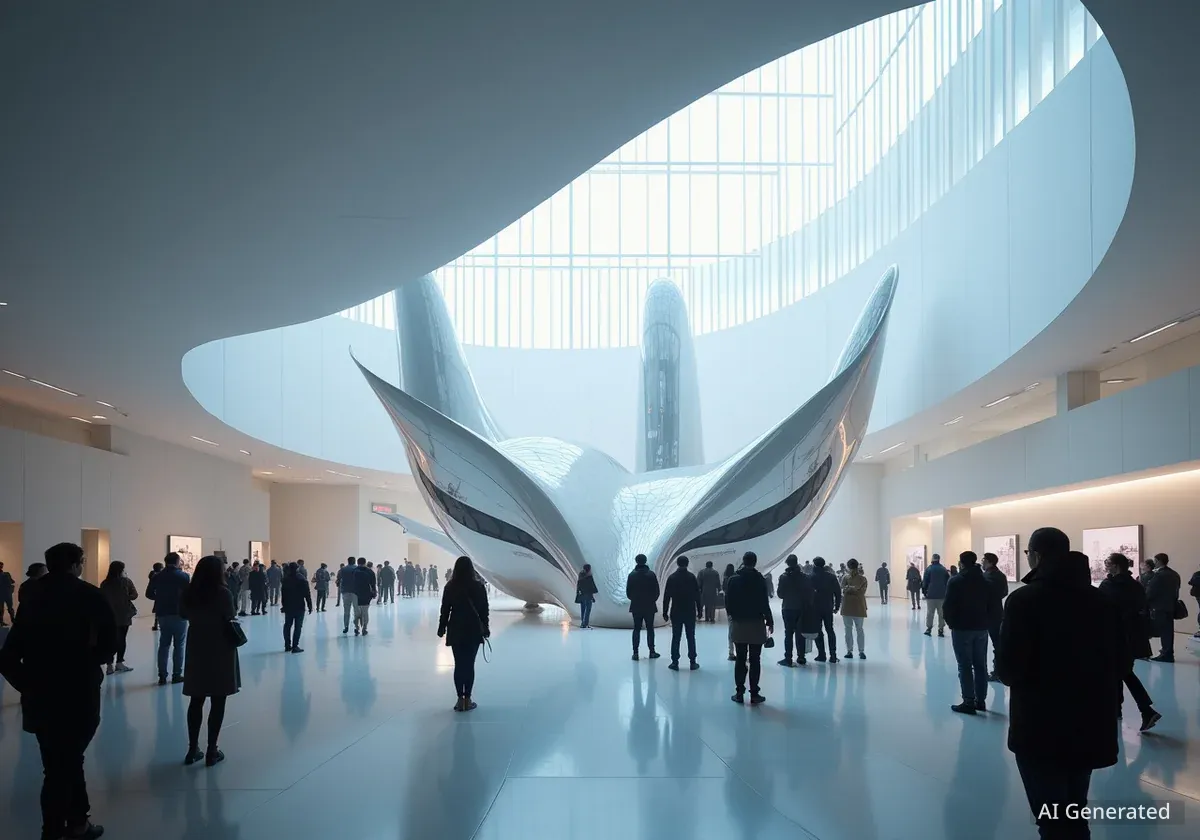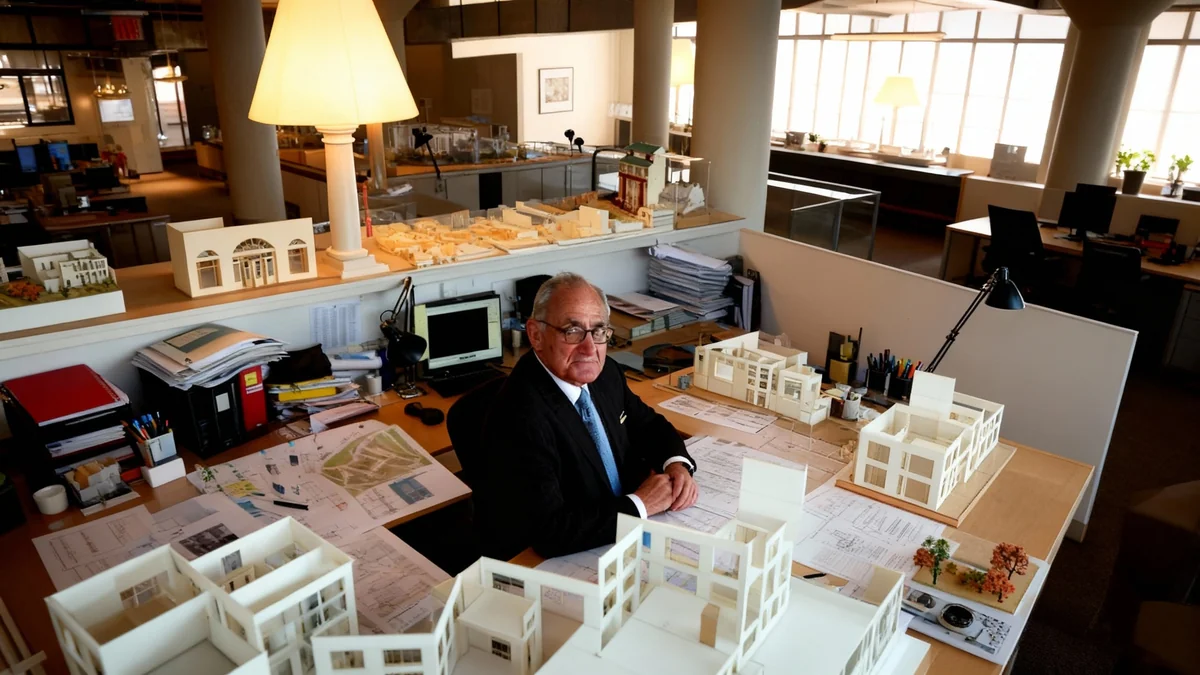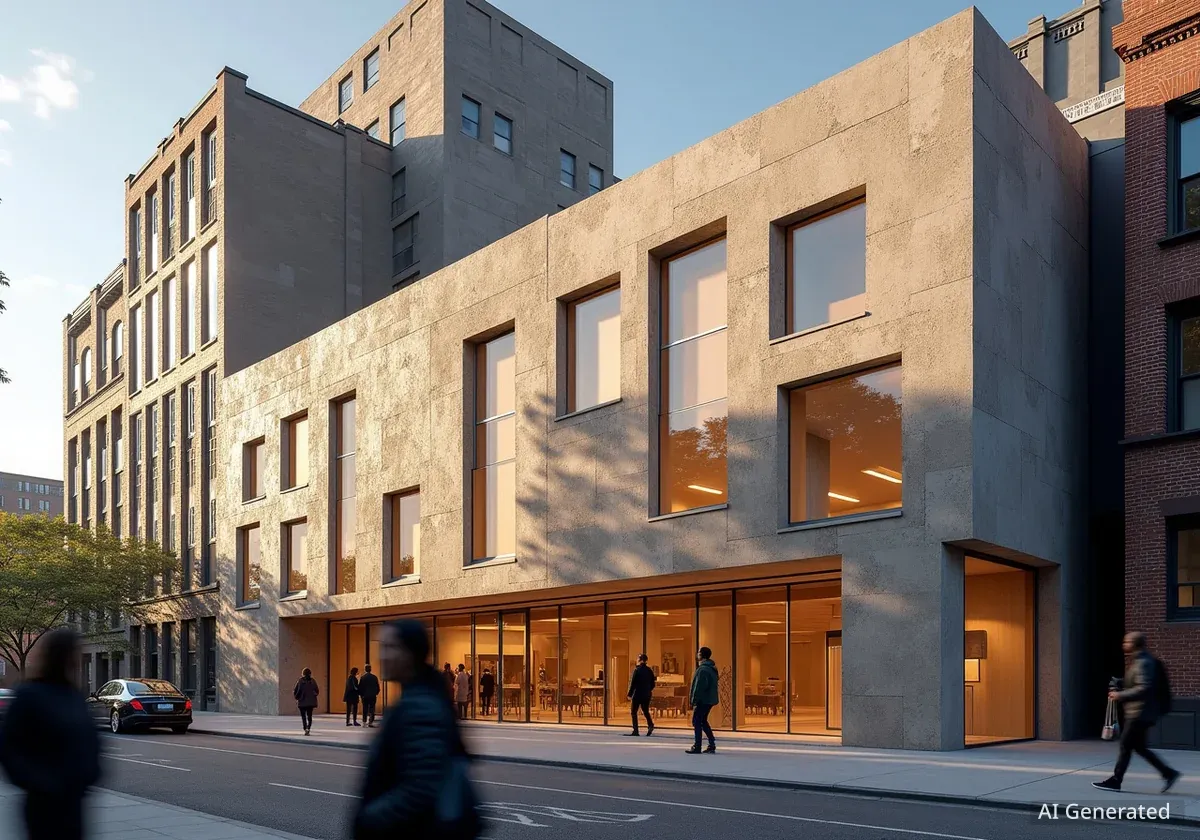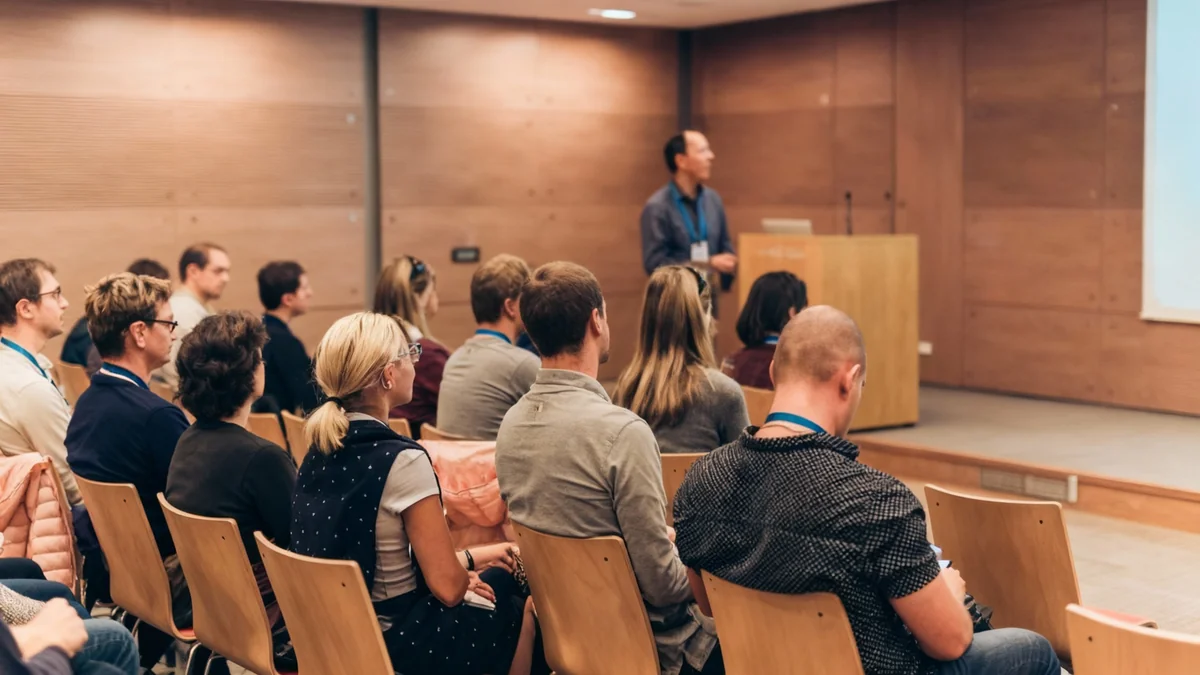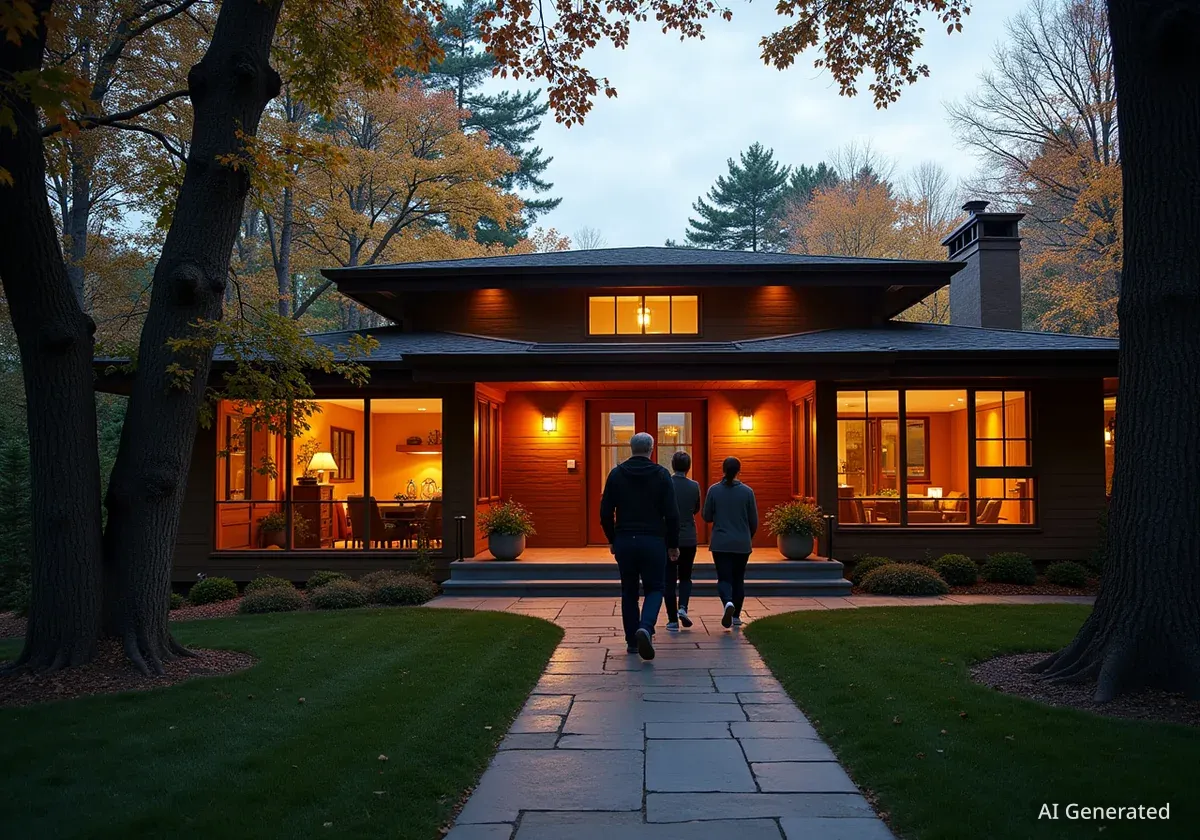Open Architecture, a prominent Beijing-based design studio, is set to curate the inaugural exhibition for the new Powerhouse Parramatta museum in Sydney, Australia. Known for its unconventional and experimental approach to design, the firm will present 'Task Eternal,' an aerospace showcase inspired by science fiction, in the largest museum space in Australia.
The studio, founded by married architects Huang Wenjing and Li Hu, has quickly gained international recognition since its establishment in 2008. Their work often challenges traditional architectural norms, focusing on projects that explore broader questions rather than specific client styles.
Key Takeaways
- Open Architecture will curate 'Task Eternal' at Powerhouse Parramatta.
- The exhibition is an aerospace showcase inspired by Ted Chiang's short story.
- It will occupy Ps1, Australia's largest museum space, measuring over 2,100 square meters.
- Open Architecture is known for its experimental and conceptual design approach.
- The studio emphasizes adaptability and a nature-oriented view of sustainability.
Open Architecture's Unique Design Philosophy
Open Architecture has cultivated a reputation for creating buildings that are both experimental and conceptually driven. Founders Huang Wenjing and Li Hu describe their process as one that often begins with open-ended client requests, allowing them to define the project's core purpose.
Li Hu explained their preference for challenging projects.
"If a client wants a specific style, it's kind of boring to us. We want to push the boundary, do something different, something we've never done before."This approach allows the studio to explore innovative solutions and expand the scope of architectural design.
Studio Profile
- Founded: 2008 in Beijing
- Founders: Huang Wenjing and Li Hu
- Known for: Experimental, conceptual, and nature-integrated designs
- Recent Project: Sun Tower, a 50-meter concrete cone functioning as a sundial
One notable example of their work is the recently completed Sun Tower, a 50-meter-tall concrete structure that operates as a massive sundial. Li stated that the client's initial instruction for this project was simply to "make something substantial." This broad brief enabled the team to develop a distinctive and functional landmark.
Curating 'Task Eternal' at Powerhouse Parramatta
The Powerhouse Museum announced that Open Architecture will design and curate 'Task Eternal,' the opening exhibition for the Powerhouse Parramatta. This new museum is scheduled to open in late 2026. The exhibition will be presented in Ps1, which is Australia's largest museum space, covering more than 2,100 square meters and featuring an 18-meter ceiling height.
Unlike typical exhibition commissions, Open Architecture did not receive a predefined brief or object list from the Powerhouse Museum. Instead, they collaborated directly with the museum's in-house curatorial team to develop the initial concept for 'Task Eternal.' This partnership highlights the studio's preference for a more involved and conceptual role in their projects.
Powerhouse Parramatta
The Powerhouse Parramatta is a new cultural institution under construction in Sydney, Australia. It aims to be a major hub for arts, science, innovation, and design. The museum will host a variety of exhibitions and programs, contributing significantly to the cultural landscape of Western Sydney.
Li Hu described the exhibition as
"literally a museum within a museum."He emphasized the studio's goal to push the boundaries of exhibition design by combining architecture, conceptual art, and curation into a single immersive experience. The exhibition is structured to take visitors on an ascending journey through four distinct acts: Skyward, Power, Off-Earth, and The Return.
Open Architecture designed the exhibition to mimic the experience of watching a film, incorporating 35 different scenes across these four acts. These scenes cover various aspects of humanity's engagement with space, from early navigation stories and the commercialization of space to its weaponization, exploration, and the eventual return to Earth.
The core aim of 'Task Eternal' is to encourage visitors to reflect on humanity's innate drive to explore the unknown. Huang Wenjing noted the importance of this introspection:
"There's so much we don't know, but there's a lot more we need to hold on to. That is the Earth, where we are grounded."
Adaptability and a Holistic View of Nature
Open Architecture views its expanded role beyond traditional architectural design as a necessary adaptation in a rapidly changing world. Huang Wenjing stated,
"We are less arrogant than we used to be, humbled by how fast things can change."She highlighted the importance of acquiring diverse skills to remain adaptable, likening it to the Chinese concept of having 'skill in 18 types of combat.'
This adaptability is evident in the studio's recent venture into housing design with the Nanshan Commune project in Shenzhen. This marks a new typology for Open Architecture, where they are responsible for not only the architectural design but also planning, landscape design, interior design, lighting design, and furniture design.
Huang noted the irony that opportunities for residential design arose only after the collapse of China's real estate market.
"People realize the market is flooded with bad products of residential buildings, and put more emphasis on lifestyle and quality of life."The Nanshan Commune is designed as an alternative to the common gated communities and residential towers in China, aiming to create a more integrated and community-focused living environment.
Integrating Nature into Design
A fundamental principle for Open Architecture is the integration of nature into their designs. For the Nanshan Commune, the studio utilized the sloping site to introduce four green terraces and two community centers at ground level. Huang emphasized their belief that
"buildings are to protect nature, not destroy nature."
She further explained their philosophy:
"Architecture should be an instrument to capture the invisible elements of nature, such as light and sound, to ignite our senses to feel the surroundings, because we, as humans, are part of nature."This perspective guides every decision, from material selection to site planning.
- Material Choices: Reflect sensitivity to environmental impact.
- Site Integration: Prioritizing natural topography and existing ecosystems.
- Sensory Experience: Designing spaces that enhance connection to natural elements like light and sound.
This deep understanding of nature was also explored in their documentary film, 'Nature Trilogy.' Produced in collaboration with director Zhang Nan, the film premiered at the Venice Architecture Biennale earlier this year. It profiles three of Open Architecture's well-known projects – UCCA Dune Art Museum, Chapel of Sound, and Sun Tower – showcasing the philosophical connection between them.
A Different Approach to Sustainability
Huang Wenjing and Li Hu propose that China's approach to sustainability differs from Western perspectives. They view sustainability through a nature-oriented lens rather than a purely technical one. Li argued that sustainability is not simply about quantifiable metrics like carbon emissions or energy consumption.
"Nature is not about numbers – how much carbon emissions, how much energy used," Li stated. "You can have a building that is beautiful on the chart, but does not perform. Ecology is a social agenda, not a technical calculation."
Huang added that while architects have professional training in the scientific aspects of sustainability, the social and spiritual dimensions are equally critical.
"Nature is sacred. Our ancestors see nature as power and mystery, but nowadays, we see it as resources, something we can use and control."
They advocate for addressing the root causes of environmental problems rather than just the symptoms. This perspective suggests a need for a more profound shift in humanity's relationship with nature, moving beyond technological fixes to embrace a more holistic and respectful coexistence.
The studio's work and philosophy underscore a commitment to designs that are not only aesthetically compelling but also deeply thoughtful about their environmental and societal impact. Their role in the Powerhouse Parramatta exhibition further solidifies their position as innovators in global architecture and exhibition design.
